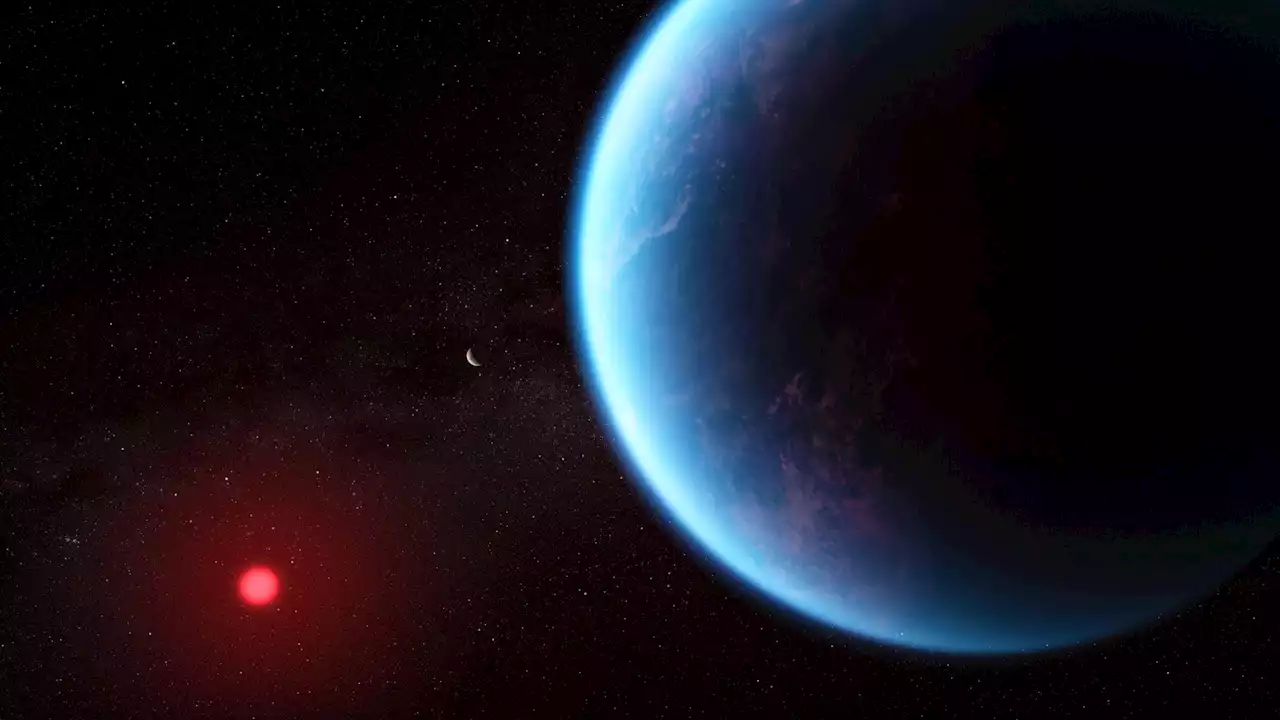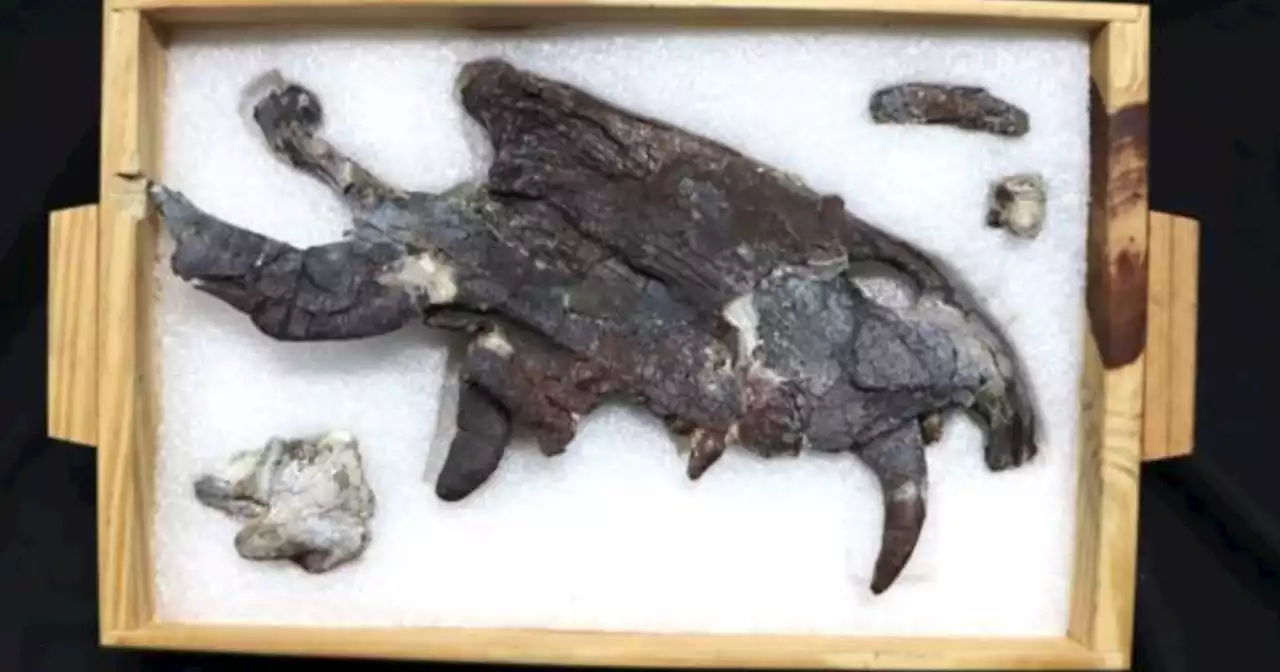The creatures likely were present in South America 40 million years before dinosaurs did.
, researchers from all over the world found an"exquisitely preserved" 265-million-year-old set of fossils from the creature.
The fossil species was found in São Gabriel, a rural area in southern Brazil. The fossil includes a"complete skull and some bones," according to the news release, including rib and arm bones. It took paleontologists from the Paleontology Laboratory at the Federal University of Pampa and the Universidade Federal do Rio Grande do Sul one month to collect the fossil. Researchers then spent three years cleaning and studying the skull.
Pampaphoneus biccai are part of a clade, or group of creatures with a shared ancestor. There are four main clades from the period where these creatures existed, and they were part of the Dinocephalian clade, which had thick cranial bones and were large land animals that were found in South Africa and Russia. Pampaphoneus biccai are the only known species of dinocephalians in Brazil, researchers said.
"Pampaphoneus played the same ecological role as modern big cats," said senior author Felipe Pinheiro, the laboratory head and a professor at the Federal University of Pampa."It was the largest terrestrial predator we know of from the Permian in South America. The animal had large, sharp canine teeth adapted for capturing prey. Its dentition and cranial architecture suggest that its bite was strong enough to chew bones, much like modern-day hyenas.
United States Latest News, United States Headlines
Similar News:You can also read news stories similar to this one that we have collected from other news sources.
 The earliest deep-sea vertebrates revealed by unusual trace fossilsScientists have discovered a missing evolution puzzle piece in 130-million-year-old rocks. The discovery is a result of an international collaboration, in which the Faculty of Sciences of the University of Lisbon (Portugal) is involved.
The earliest deep-sea vertebrates revealed by unusual trace fossilsScientists have discovered a missing evolution puzzle piece in 130-million-year-old rocks. The discovery is a result of an international collaboration, in which the Faculty of Sciences of the University of Lisbon (Portugal) is involved.
Read more »
 Two Ancient Human Fossils Just Flew to Space in A Billionaire's PocketA recent mission from the American spaceflight company, Virgin Galactic, is facing public backlash after it carried the remains of two extinct hominins into space.
Two Ancient Human Fossils Just Flew to Space in A Billionaire's PocketA recent mission from the American spaceflight company, Virgin Galactic, is facing public backlash after it carried the remains of two extinct hominins into space.
Read more »
 Synchrotron studies change understanding of the composition of Earth's coreIn work published in Science Advances, a team of researchers have determined a new pressure scale, which is critical for understanding the Earth's composition.
Synchrotron studies change understanding of the composition of Earth's coreIn work published in Science Advances, a team of researchers have determined a new pressure scale, which is critical for understanding the Earth's composition.
Read more »
 Malaysia plans to introduce ban on exporting rare earth mineralsChina recently announced curbs of some critical metals used in the semiconductor industry.
Malaysia plans to introduce ban on exporting rare earth mineralsChina recently announced curbs of some critical metals used in the semiconductor industry.
Read more »
 JWST Might Have Imaged a Hycean World for the First Time, With a Hydrogen-Rich Atmosphere and a Deep Planet-Wide Water OceanAstronomers have directed JWST to examine the atmosphere of an exoplanet called K2-18 b, which orbits a cool dwarf star about 120 light-years from Earth. The planet is 8.6 times as massive as Earth, and the observations have revealed methane and carbon dioxide in its atmosphere. This opens up the intriguing possibility that this exoplanet is an example of a theorized 'hycean world,' a planet with a hydrogen-rich atmosphere and a water ocean covering its surface that extends deeper than anything we have on Earth.
JWST Might Have Imaged a Hycean World for the First Time, With a Hydrogen-Rich Atmosphere and a Deep Planet-Wide Water OceanAstronomers have directed JWST to examine the atmosphere of an exoplanet called K2-18 b, which orbits a cool dwarf star about 120 light-years from Earth. The planet is 8.6 times as massive as Earth, and the observations have revealed methane and carbon dioxide in its atmosphere. This opens up the intriguing possibility that this exoplanet is an example of a theorized 'hycean world,' a planet with a hydrogen-rich atmosphere and a water ocean covering its surface that extends deeper than anything we have on Earth.
Read more »
 James Webb telescope could detect life on Earth from across the galaxy, new study suggestsResearchers have shown that if the James Webb Space Telescope was pointed at Earth from a distant star, it could detect the signatures of intelligent life in our planet's atmosphere.
James Webb telescope could detect life on Earth from across the galaxy, new study suggestsResearchers have shown that if the James Webb Space Telescope was pointed at Earth from a distant star, it could detect the signatures of intelligent life in our planet's atmosphere.
Read more »
